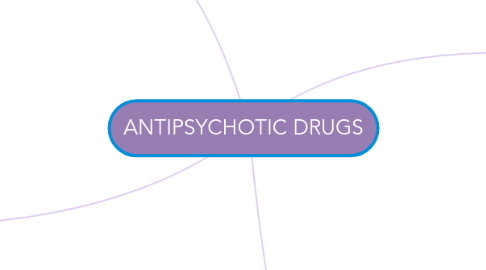
1. Mechanism of Dopamine Pathways
1.1. Mesolimbic Pathway
1.1.1. Regulates positive symptoms of psychosis
1.1.2. Regulation of emotion or behaviours
1.2. Mesocortical Pathway
1.2.1. Mediates negative and affective (mood) symptoms associated with schizophrenia
1.3. Nigrostriatal Pathway
1.3.1. Dopamine inhibits release of excessive Ach
1.4. Tuberoinfundibular Pathway
1.4.1. Dopamine inhibits prolactin secretion
2. Therapeutic Uses
2.1. Psychiatric Indications
2.1.1. Schizophrenia
2.1.2. Psychotic bipolar disorder
2.1.3. Psychotic depression
2.1.4. Alzheimer's disease
2.1.5. Tourette's syndrome
2.2. Non-psychiatric Indications
2.2.1. Antiemetic effect (1st Gen)
2.2.2. Relief pruritus
3. Typical Agents (1st Generation)
3.1. Examples
3.1.1. Chlorpromazine
3.1.2. Haloperidol
3.1.3. Perphenazine
3.2. Mode of Action
3.2.1. D2 antagonism
3.3. Adverse Effects
3.3.1. Extrapyramidal symptoms
3.3.2. Secondary negative effects
3.3.3. Secondary cognitive effects
4. Atypical Agents (2nd Generation)
4.1. Examples
4.1.1. Clozapine
4.1.2. Olanzapine
4.1.3. Quetiapine
4.2. Mode of Action
4.2.1. Serotonin 2A & D2 Dopamine antagonism
4.3. Adverse Effects
4.3.1. Insulin resistance
4.3.2. Sedation
4.3.3. Enhanced apetite
